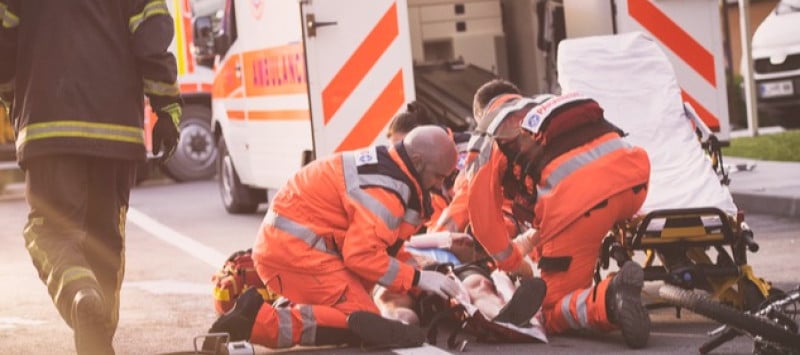First Aid Response: A Lifesaving Guide
A quick guide on how to respond to different trauma cases
Syed Sehal Masroor, Hania Khan, Hamza Najam, Muhammad Bilal
12/20/20242 min read
In moments of unexpected emergencies, having the knowledge and confidence to respond effectively can make all the difference. First aid is the immediate care provided to an individual who has been injured or is experiencing a sudden illness until professional medical assistance is available. This blog post delves into the critical aspects of first aid, equipping you with essential skills to act decisively when every second counts.
The Importance of First Aid
First aid serves as the initial response to prevent further harm, reduce complications, and in some cases, save lives. A prompt response can:
Stabilize a victim until professional help arrives.
Minimize the risk of infection or complications.
Provide comfort and reassurance during distress.
Essential Components of First Aid
Assess the Situation:
Stay calm and ensure the area is safe for yourself and the victim.
Avoid putting yourself at risk, as this could worsen the situation.
Check Responsiveness:
Tap the person gently and ask loudly, "Are you okay?"
If unresponsive, immediately call for emergency medical help.
Call for Help:
Dial the emergency services number in your country (e.g., 911 in the U.S.).
Provide clear details: location, nature of the emergency, and the number of victims.
Administer Basic First Aid:
Follow the "ABC" protocol: Airway, Breathing, Circulation.
Ensure the airway is open, check for breathing, and, if absent, begin chest compressions.
Common First Aid Scenarios and Responses
Choking:
Encourage the person to cough if they can.
If choking persists, perform the Heimlich maneuver:
Stand behind the person, place a fist above their navel, and thrust inward and upward.
Bleeding:
Apply firm pressure to the wound using a clean cloth.
If the bleeding doesn’t stop, layer additional cloths without removing the first.
Elevate the affected area above heart level if possible.
Burns:
For minor burns, run cool (not cold) water over the area for 10-20 minutes.
Avoid using ice, as it can damage tissue.
Cover the burn with a sterile, non-adhesive bandage.
Fractures:
Immobilize the injured area using a splint or improvised support.
Avoid moving the affected limb.
Apply ice wrapped in a cloth to reduce swelling.
Heart Attack:
Symptoms include chest pain, shortness of breath, and dizziness.
Call emergency services immediately.
Help the victim sit in a comfortable position and offer an aspirin if not allergic.
Seizures:
Do not restrain the person or put anything in their mouth.
Clear the area of sharp objects to prevent injury.
After the seizure stops, place the individual in the recovery position (on their side).
Basic First Aid Kit Essentials
A well-stocked first aid kit can make a significant difference in emergencies. Include the following:
Adhesive bandages
Sterile gauze and medical tape
Antiseptic wipes and solution
Scissors and tweezers
Disposable gloves
Pain relievers (e.g., paracetamol or ibuprofen)
Emergency blanket
CPR mask or shield
First Aid Training: An Essential Skill
While basic knowledge is valuable, formal first aid training can prepare you for more complex emergencies. Courses typically cover CPR, advanced wound care, and the use of automated external defibrillators (AEDs). Certification ensures you are equipped to act responsibly and confidently.
Conclusion
First aid is more than a skill; it is a responsibility and an act of humanity. By learning and practicing these techniques, you can play a vital role in safeguarding lives during emergencies. Equip yourself with knowledge, maintain a first aid kit, and consider taking a certified course to deepen your expertise. In critical moments, your response could be the difference between life and death.
Stay prepared, stay calm, and stay ready to help.
Innovation
Revolutionizing wound care with eco-friendly solutions.
Sustainability
Healing
© 2024. All rights reserved.


